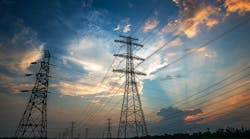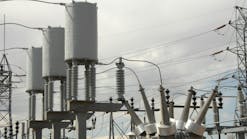Pacific Gas and Electric Company (PG&E) recently shared an update on its accelerated and enhanced safety inspections and repairs conducted in high fire-threat areas over the past six months. These inspections are a part of PG&E's Community Wildfire Safety Program, which was implemented following the wildfires in 2017 and 2018 to provide additional precautionary measures to further reduce wildfire risk. This update is intended to keep the company’s customers informed about the work being done to mitigate wildfire risks and safely deliver energy to consumers and communities.
Through the end of May 2019, PG&E has completed visual inspections of approximately 99% of its distribution infrastructure, and visual or aerial inspections of approximately 98% of its transmission infrastructure in high fire-threat areas. This includes approximately 50,000 electric transmission structures, 700,000 distribution poles, and 222 substations, covering more than 5500 miles of transmission line and 25,200 miles of distribution line.
Throughout the inspection process, PG&E has been addressing and repairing conditions that pose an immediate safety risk, while completing other high-priority repairs on an accelerated basis. Repairs for all other conditions are scheduled to be completed as part of PG&E's work execution plan.
"We've just concluded one of the most advanced inspections of our electric infrastructure in the high fire-threat areas and the number of safety issues we’ve identified is unacceptable," said Bill Johnson, president and CEO of PG&E. "The safety of our customers and communities must be the driving factor in our approach to maintaining our electric system. The efforts and dedication of the more than 2000 PG&E employees and contractors during this inspection and repair process is a start in the right direction."
Transmission Line Safety
PG&E has permanently de-energized the Caribou-Palermo transmission line, which CAL FIRE identified as an ignition point of the Camp Fire. The line has been out of service since December 2018. As previously disclosed, during its inspections PG&E identified a significant number of high-priority conditions on the Caribou-Palermo line. At the request of the California Public Utilities Commission (CPUC), PG&E retained Exponent, an independent third-party scientific and engineering consulting firm, to conduct a records-based review of the transmission line. PG&E expects that Exponent will conclude its review over the next couple of months.
During the Wildfire Safety Inspection Program (WSIP) repair work, PG&E also identified several high-priority issues on one section of the Ignacio-Alto-Sausalito transmission line that runs through areas of the Golden Gate National Recreation Area (GGNRA) and serves the city of Sausalito. 10 of the line's 11 towers in the GGNRA with high-priority conditions will require complete replacement. The utility has initiated preparations for repair work, which will require the construction of a temporary transmission line to provide electric service while the towers on the permanent transmission line are replaced and repaired. PG&E is also in the process of assessing other structures on the line to determine if additional corrective actions are needed.
PG&E has provided results of the enhanced and accelerated inspections to the CPUC and will be making the status of the high-priority repairs, organized by city and county, publicly available on its website on or before July 15.
Inspection And Repair Progress
The unprecedented volume of wildfire risk reduction work outlined in PG&E's Wildfire Safety Plan, along with the challenges outlined in the Plan, including inclement weather, the availability of qualified personnel, scheduling of transmission clearances, and access and environmental permitting requirements, have prevented PG&E from achieving every aspect of the Plan's targets.
The utility will prioritize safety-driven work, including corrective actions presenting immediate fire risk, which will delay completion of other corrective actions that present reduced or no fire or safety risks.
As of May 31, 2019, of the WSIP inspections, PG&E has completed:
- Visual or aerial inspections of approximately 98% of the nearly 50,000 transmission structures in, or adjacent to, high fire-threat areas.
- Inspections of all 222 substations in high fire-threat areas.
- Inspections of approximately 99% of nearly 700,000 distribution poles in, or adjacent to, high fire-threat areas.
As of May 31, 2019, through the WSIP inspections, PG&E has identified:
- Approximately 53,000 corrective actions on transmission structures with nearly 100 conditions classified as highest priority. 100% of these highest-priority conditions have been repaired or made safe.
- Approximately 207,000 corrective action on distribution poles with nearly 1000 conditions classified as highest priority. 97% of these highest-priority conditions have been repaired or made safe and the remaining high-priority conditions are currently in the process of being repaired.
- Approximately 3000 corrective actions within substations with approximately 100 conditions classified as highest priority. 100% of these highest-priority conditions have been repaired or made safe.
The learnings, enhanced inspection processes and new technologies, including use of drones and high-resolution imagery capture, from the nearly completed WSIP are being incorporated into PG&E's future inspection plans. Combined with a risk-based asset inspection cycle that is expected to exceed the minimum compliance inspection cycle, the inspection tools are being incorporated into a plan to minimize the wildfire risk faced by communities.
"The unmistakable message of the inspection results is that we as a company must do a much better job of making sure that we maintain our assets in a way that puts safety first," said Sumeet Singh, PG&E vice president of the Community Wildfire Safety Program. "The unprecedented amount of work we've put into the inspections and completing all of the accessible identified high-priority repairs puts us on a path to becoming the company that our customers deserve."
Wildfire Safety Inspection Program
The inspection work is being completed as part of PG&E's Community Wildfire Safety Program, which is in addition to the company's routine inspection and maintenance programs executed in accordance with state regulatory requirements. The inspections involve nearly 750,000 transmission and distribution structures along, or immediately adjacent to, more than 5500 miles of transmission line and 25,200 miles of distribution line in high fire-threat areas, as defined by the CPUC's High Fire-Threat Map.
In all, more than 2000 people — PG&E employees and contractors — have performed the inspection work and have been integrating new technologies that the company will continue to use going forward.
Inspectors looked at all aspects of PG&E assets including cross-arms, insulators and footings, along with critical electrical components and equipment. PG&E and contract crews inspected electric towers and poles from top to bottom through ground, climbing, helicopter or drone inspections.
Inspection findings were documented, particularly through high resolution images, and reviewed by teams with experience in system maintenance, engineering and maintenance, planning to evaluate identified conditions. This process included reviewing millions of high-definition photographs taken from the ground, qualified personnel climbing towers, drones and helicopters. Photographs were evaluated by experts who rated the severity of the condition found, assigned a priority level and began the process of dispatching corrective notifications for repair.


